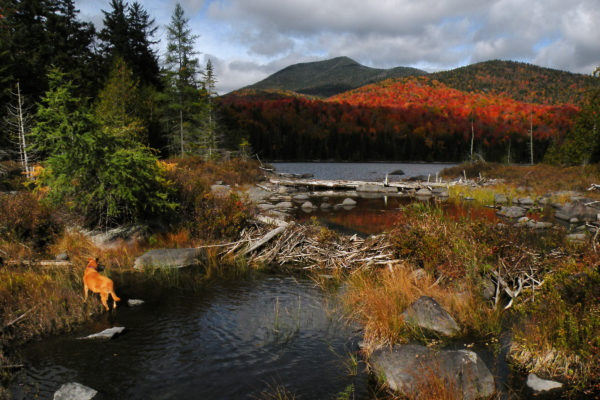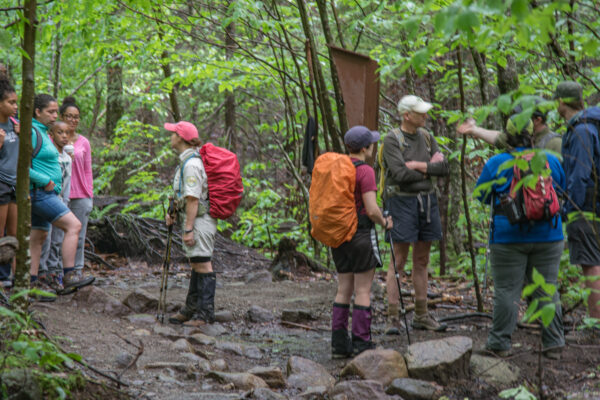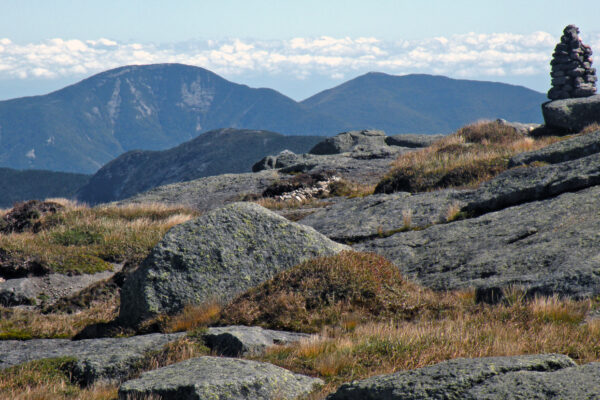Mark April 8, 2024 on your calendars: this will be the day when the skies go dark over the northern Adirondacks. For as long as three and a half minutes in some places.
The joke, of course, is that the skies may very well be dark that day without anyone batting an eye, by virtue of the fickle spring weather patterns that prevail at this time of year. But what I’m excited for is the possibility of clear skies—because if that’s the case, much of the Adirondack Park will lie within the path of totality for what promises to be a spectacular solar eclipse.
A total solar eclipse occurs when the Moon passes directly between the Sun and the Earth, casting its shadow across a narrow corridor of terrain—the “path of totality.” For the few minutes it takes the Moon to pass across the Sun’s face, observers within this path will witness the Sun go dark and the stars appear in the middle of the afternoon—an event that won’t happen again in the Adirondacks until July 23, 2093.
Historically, solar eclipses were often viewed as dark omens. Multiple societies learned how to predict them but few could explain them. Often, the occurrence was interpreted as a prediction of death; paranoid kings fearing assassination would place hapless doppelgangers on the throne, only to then murder the decoy when the “threat” had passed.
Later, more reasonable minds deduced that eclipses were actually occasions for natural wonder, and that the lessons they taught included the ins and outs of orbital mechanics, gravity, and relativity. Today we are able to predict solar eclipses with remarkable accuracy, including every single one that will occur throughout the century.
The 2024 eclipse will make landfall on Mexico’s Pacific Coast and then traverse much of North America, crossing Newfoundland before finally drifting over the North Atlantic Ocean and fading away. Only those locations within the path of totality—depicted as a narrow stripe on eclipse maps—will see the Sun go completely dark; the rest of the United States will be treated only to a partial eclipse.
I have been anticipating this event since 2017, when another solar eclipse passed over the United States. Some people traveled great distances to place themselves within the path of totality, although regrettably I was not among them. From where I stood that day the sky only grew oddly dim despite being mostly cloudless, which was bizarre but not life-changing; when viewed through eclipse glasses the Sun merely appeared as though the Moon had taken a bite out of it—a celestial cookie, if you will.
This time I plan to take full advantage of the event. I am frequently camping out in the Adirondack wilderness anyway, and April 8, 2024 will just happen to fall on a Sunday. So how cool would it be to observe the eclipse from a backcountry campsite?!?
The trick will be placement—and sheer luck.
Let’s discuss the luck aspect first, since this is something we can’t control. Basically, if the weather doesn’t cooperate then the eclipse may very well pass over our mountains unnoticed. History has recorded numerous expeditions by astronomers to view total solar eclipses that ended ingloriously with overcast skies. One can only imagine the buzzkill. And if you are familiar in any way with northern New York weather, you know the odds are depressingly high this could happen here.
But sometimes we get good weather, too. So if that’s the case, then I’ll want to place myself in the best possible vantage to view this event! (Because by 2093, when the next Adirondack eclipse occurs, I’ll be 118 years old, and I can only assume my hiking plans will be severely diminished by then.)
Fortunately, the path of totality will cover roughly two-thirds of the Adirondack Park, and I can think of a lot of desirable campsites in that terrain. As well as choice mountain summits. Of course this will be April 8, very early in the spring, so the gated seasonal access roads will still be closed and many other unpaved ways could be temporarily barricaded for “mud season.” Lakes and ponds will still be frozen too, though probably not solidly enough to entice me to walk out onto them. The deep woods will likely remain snowbound, mountain slopes icy, and any attempt to cover long distances could be a tedious, treacherous affair.
But not insurmountable for experienced cold-weather hikers.
The best observation points will have a southwest-facing orientation and a clear view of the sky. Totality will strike at approximately 3:23 PM and last anywhere from one to just shy of four minutes, depending on where one stands.
That last detail is interesting because although the Moon’s shadow will be quite large, it will also be ovular in shape by the time it reaches the Adirondacks. This means that those localities that lie directly along its path will be treated to a longer show than those along its edge. Buffalo will be cast in the Moon’s shadow for 3 minutes and 45 seconds, whereas Syracuse will see only 1 minute 26 seconds of totality.
A similar pattern will play out in northern New York. Watertown and Plattsburg will actually fare pretty well, with the center of the Moon’s shadow passing close to each city. Draw a direct line between them, and that’s more or less the place to be in the Adirondacks. Star Lake and Cranberry Lake will be positioned well, but Tupper Lake and Saranac Lake will be slightly off-center. Old Forge and Blue Mountain Lake will both be dark for under three minutes, but Paul Smiths will get the full show.

If, like me, you wish to make this eclipse a wilderness experience, then the implications are clear: the northern fringes of the Five Ponds Wilderness, the Cranberry Lake Wild Forest, the Saint Regis Canoe Area, and the Taylor Pond Wild Forest will be among the Forest Preserve tracts in which you’ll want to be that day. The High Peaks Wilderness, Jay Mountain Wilderness, Blue Ridge Wilderness, and Pigeon Lake Wilderness (among quite a few others) will also lie within the path of totality, but the shadow will linger for a shorter period of time.
But alas, we can’t predict the weather quite as well as we can forecast eclipse paths. If the outlook for the Adirondacks looks bleak when April 8 arrives, and you would rather actually witness the eclipse than shiver in the damp chill of yet another overcast day, then it might be better to head southwest. Outside of the Northeastern U.S., the shadow will trace a path from Texas to Niagara Falls. Surely there will be someplace along that swath of heartland with a good view of the Sun!
Safety and Resources
Although there will be plenty of people staring at the Sun on April 8, 2024, it will be no safer to do so than on any other day. Basically—in case you didn’t learn this as a child—if you look directly at the Sun with your bare eyes, you could cause significant damage to your vision! And normal sunglasses won’t help you avoid that fate. Only when totality occurs will it be safe to look directly at the Sun and Moon unaided.
Therefore if you want to learn more about the 2024 solar eclipse and how to prepare for it, I recommend these resources:
NASA
NASA has an excellent website that includes safety guidelines and a countdown clock.
GreatAmericanEclipse.com
This website offers a wealth of information, including the map I borrowed for this post. There is a customized page just for New York State, as well as a broader page for the 2024 eclipse in general.
Solar Filters & Viewers
Check out the American Astronomical Society’s recommended list of eclipse glasses and solar viewers.
Eclipse History and Science
If you want to learn more about the lore, history, and science behind solar eclipses, then (like me) you may devour John Dvorak’s 2017 book Mask of the Sun.



